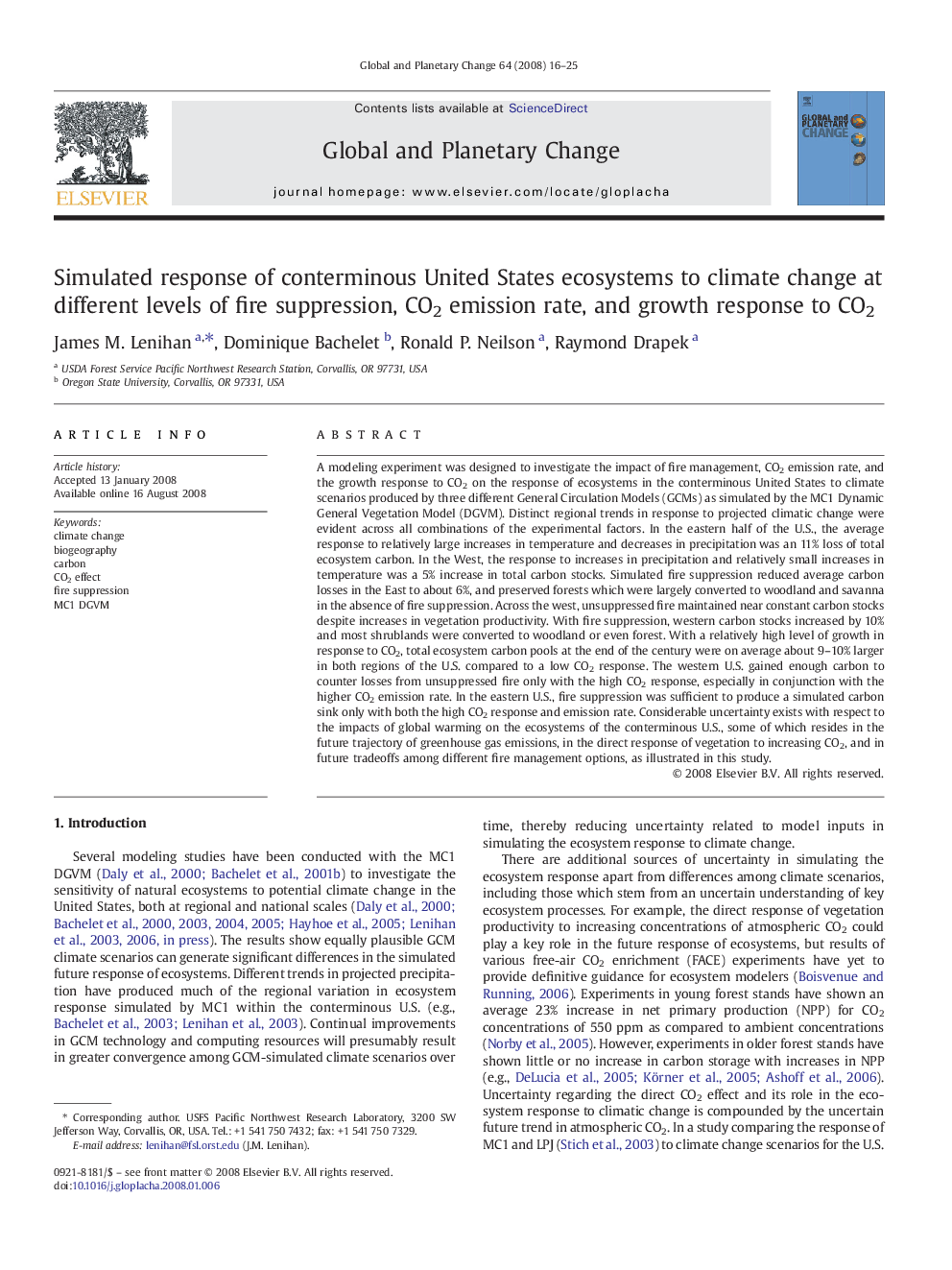| کد مقاله | کد نشریه | سال انتشار | مقاله انگلیسی | نسخه تمام متن |
|---|---|---|---|---|
| 4464222 | 1621718 | 2008 | 10 صفحه PDF | دانلود رایگان |

A modeling experiment was designed to investigate the impact of fire management, CO2 emission rate, and the growth response to CO2 on the response of ecosystems in the conterminous United States to climate scenarios produced by three different General Circulation Models (GCMs) as simulated by the MC1 Dynamic General Vegetation Model (DGVM). Distinct regional trends in response to projected climatic change were evident across all combinations of the experimental factors. In the eastern half of the U.S., the average response to relatively large increases in temperature and decreases in precipitation was an 11% loss of total ecosystem carbon. In the West, the response to increases in precipitation and relatively small increases in temperature was a 5% increase in total carbon stocks. Simulated fire suppression reduced average carbon losses in the East to about 6%, and preserved forests which were largely converted to woodland and savanna in the absence of fire suppression. Across the west, unsuppressed fire maintained near constant carbon stocks despite increases in vegetation productivity. With fire suppression, western carbon stocks increased by 10% and most shrublands were converted to woodland or even forest. With a relatively high level of growth in response to CO2, total ecosystem carbon pools at the end of the century were on average about 9–10% larger in both regions of the U.S. compared to a low CO2 response. The western U.S. gained enough carbon to counter losses from unsuppressed fire only with the high CO2 response, especially in conjunction with the higher CO2 emission rate. In the eastern U.S., fire suppression was sufficient to produce a simulated carbon sink only with both the high CO2 response and emission rate. Considerable uncertainty exists with respect to the impacts of global warming on the ecosystems of the conterminous U.S., some of which resides in the future trajectory of greenhouse gas emissions, in the direct response of vegetation to increasing CO2, and in future tradeoffs among different fire management options, as illustrated in this study.
Journal: Global and Planetary Change - Volume 64, Issues 1–2, November 2008, Pages 16–25